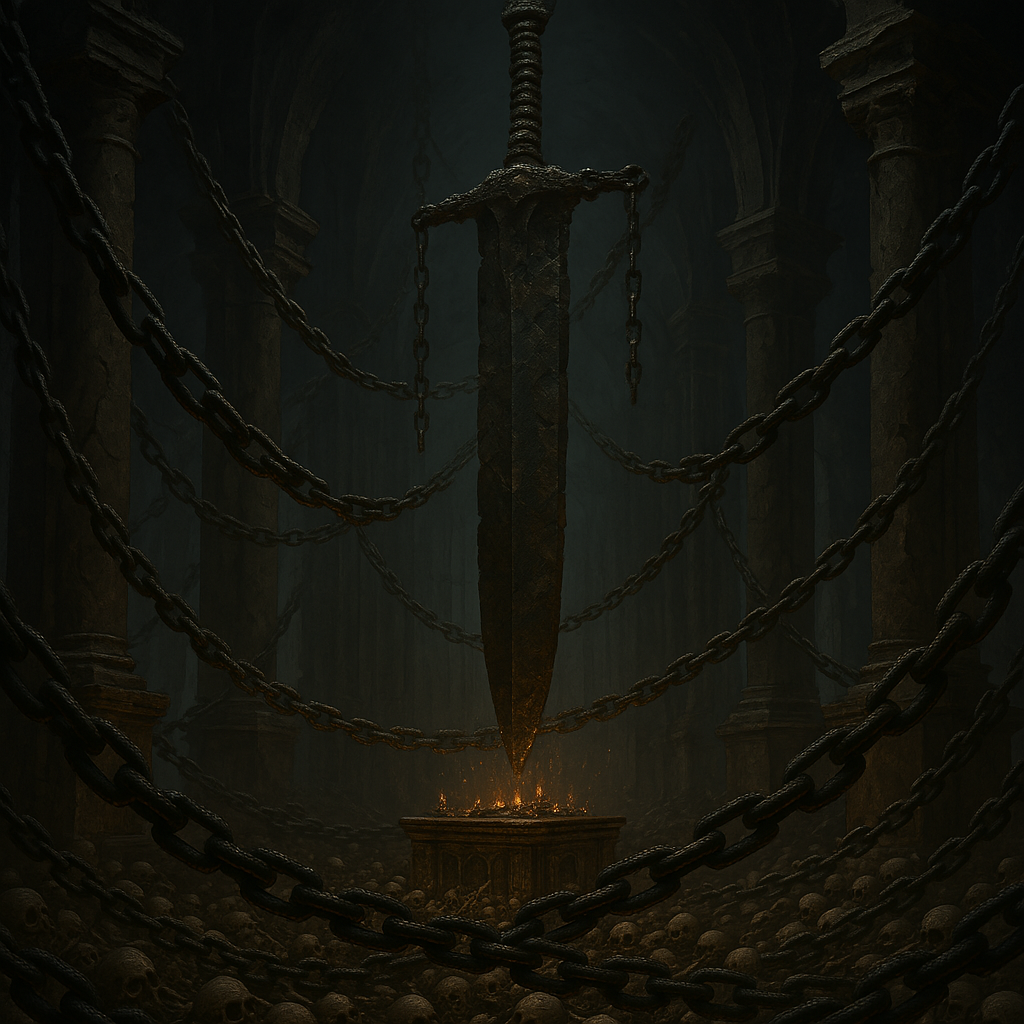Vornir, the Rusted Blade
Domain: Forgotten Warriors, Broken Vows
Titles: The Oath-Lost, He Who Staggers, The Grave-Warden of Regret
Symbol: A shattered sword over a grave
Origin Among Mortals:
Vornir was born in the aftermath — in the bloodied fields after the banners fell, in the hearts of warriors who lived when they shouldn’t have, and in the shame of those who failed to keep their oaths.
He did not arise in glory, but in regret — a god formed from dishonor, memory, and the relentless weight of what cannot be undone. When a soldier is cast out, when a knight casts down their blade in shame, when a duelist dies with their promise broken — Vornir hears them.
He is not the god of justice or redemption. He is the god of bearing it anyway.
Nature of the Rusted Blade:
Vornir is weary, limping, and silent. He carries the rusted weapons of a hundred wars — each one tied to a story of shame, betrayal, or broken oath. His presence is heavy, like forgotten armor, and his aura is not one of anger, but of eternal mourning.
He does not demand penance — only acknowledgment. He is not a punisher — he is a witness. The dishonored pray to him not for absolution, but for the strength to continue when honor is already gone.
Ghosts of failed duels, deserters who never slept again, warriors who lived long enough to regret — these are his silent congregation.
Manifestation & Imagery:
Vornir appears as a gaunt figure in battered, mismatched armor, his face hidden behind a dented helm. His sword is always broken — sometimes in his hand, sometimes impaled in his chest. Where he walks, soil cracks and rust creeps along steel.
His symbol — a shattered sword over a grave — is carved into fallen shields, painted on the backs of exile cloaks, and etched into swords cast into rivers.
It is also found near battlefield hauntings and places where soldiers died alone.
Worship and Followers:
Vornir is followed by the Oath-Fallen — those who carry regret like a second skin. They are broken knights, failed protectors, duelists killed with unspoken truths. Most worship in isolation, kneeling at graves long overgrown, or muttering prayers before rusted altars in the rain.
His rites are acts of confession, sword-breaking, or grave-tending. Some warriors carry his symbol carved into stone to mark where they wish to be buried — unclaimed, but not unseen.
Ghosts who linger from betrayal or shame often find solace in Vornir’s silent presence. Some say he ferries them to Surnazhul personally — if their sorrow is fully named.
After the Dark Awakening:
The collapse of empires left behind legions of the forgotten. Oaths were broken not by choice, but by collapse. Many warriors saw their causes fall, their comrades vanish, and their names erased from honor rolls.
In this broken world, Vornir thrives — not in joy, but in presence. His name is etched into the ruined forts, the scorched keeps, the nameless graves. Duels still echo in the dark, and his followers still stagger onward, too proud to beg for redemption, too haunted to stop walking.
Notable Sayings & Myths:
“I do not forgive. I do not condemn. I only remember.”
The Ghost Duel of Eld Hollow: Two dishonored spirits fight every year beneath a ruined tree. It is said Vornir watches each time, ensuring their grief is never forgotten.
The Rust Rite: A ritual where an Oath-Fallen breaks their weapon at the site of their greatest failure, burying the blade and naming their shame aloud. Sometimes, they are never seen again — only a new grave marker remains.
The Walk of Blades: A tale of a knight who carried the broken swords of all they had failed, one by one, until they collapsed beneath their weight — and Vornir was there to carry them the final step.

“The blade does not forget the hand that dropped it.”
— Vornir, the Rusted Blade
Children

